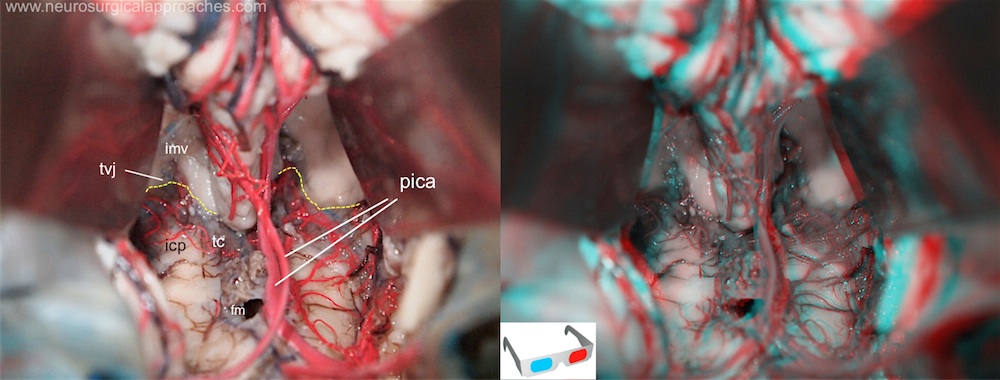Foramen of Magendie
François Magendie (6 October 1783 – 7 October 1855) was a French physiologist, considered a pioneer of experimental physiology. He is known for describing the foramen of Magendie.
The median aperture ('“medial aperture,” “Foramen of Magendie”') drains cerebrospinal fluid (CSF) from the fourth ventricle into the cisterna magna. The two other openings of the fourth ventricle are lateral apertures (foramina of Luschka), one on the left and one on the right, which drain cerebrospinal fluid into the cerebellopontine angle cistern. The median foramen on axial images is posterior to the pons and anterior to the caudal cerebellum. It is surrounded by the obex and gracile tubercles of the medulla, tela choroidea of the fourth ventricle and its choroid plexus, which is attached to the cerebellar vermis.
Fm: Foramen of Magendie; imv: inferior medullary velum; icp: inferior cerebellar peduncle; pica: posterior inferior cerebellar artery (third and forth segments) tc: tela chorioidea; tvj: telovelar junction ( yellow discontinous line).
Panventriculomegaly with a wide foramen of Magendie and a large cisterna magna may belong to a subtype of congenital hydrocephalus with familial accumulation, younger age at onset, and symptoms of normal pressure hydrocephalus. In addition, a family with PaVM has a gene mutation associated with dysfunction of motile cilia 1).
Blake's pouch cyst is a cystic appearing structure that represents posterior ballooning of the inferior medullary velum into the cisterna magna, below and posterior to the vermis that communicates with an open fourth ventricle. It is caused by a failure of regression of Blake's pouch secondary to the non-perforation of the foramen of Magendie.
